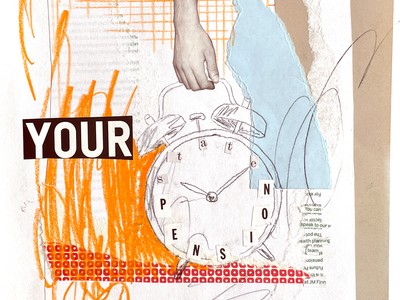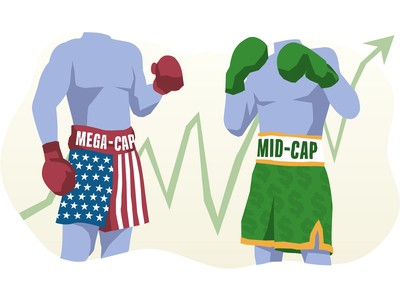Following the hikes in interest rates this year, we see that investors are now looking at gilts again, as they have been most years since the gilt market first came into being, back in 1694. After William and Mary’s Glorious Revolution of 1688, the new King William III needed cash to fight his wars and he sold gilts to raise the cash. William III’s wife was Mary II, Catholic King James II’s daughter who was raised as a Protestant on the orders of James II’s elder brother, the then King Charles II.
A brief history of gilts
Prior to 1688, the leading members of the English political class had become uneasy with a Catholic King –James II and his Catholic son James Francis Edward, and so they invited James II’s Protestant daughter and her Protestant Dutch husband William to take the throne. When William and his army landed at Brixham on 5th November 1688, James II’s army deserted and James II fled to France, vacating the throne for his daughter. Technically this was a bloodless coup d'état.
In 1694, the recently formed Bank of England gathered together 1,268 individuals to subscribe to buy £1,200,000 of stock (or gilts, as they would have been called today) yielding 8%, designed to fund William’s war with France¹. The bonds became known as gilts because the certificates had gilt edges to them.
In 1720, the South Sea Bubble episode required additional national finance – astonishingly, the debt for this was only paid off in full in 2014. Leaving aside the Bubble and, more recently COVID-19, it has tended to be wars that have driven the issuance of gilts and increases in our national debt. The impact of the Napoleonic Wars and then the two World Wars is clear to see on the historical chart of UK national debt, as shown below.
Are there other forms of government debt?
Gilts are not the only type of government debt. Our current government has borrowed £1.3 trillion from the issuance of gilts and £40 billion from the sale of short-term three month (or less) treasury bills. £1 trillion has come from the Bank of England as well as £210 billion from National Savings². The picture is less clear³ when pension deficits, other commitments and debts of QUANGOs (government-funded bodies that are either partly or fully autonomous from the government) are included.
The need to pay down government debt via taxes can lead to ‘crowding out’.
Government debt matters because at best we all have to pay taxes to pay the creditors back. In theory the government could print money to pay back creditors but that feeds through to inflation, which is often seen as another kind of tax. At worst, debt can spiral out of hand - leading to economically destructive high interest rates.
As a general rule, it is thought that keeping debt below 100% of GDP is a sound policy. Sadly, as of 2023, the UK's national debt has now risen above that 100% figure.
The need to pay down government debt via taxes can lead to ‘crowding out’. This means that investment that would normally go into the economy is diverted to pay down debt, resulting in sub-optimal economic growth. And intertemporal substitution can mean that individuals save more money now with the expectation of paying higher taxes in the future – another source of sub-optimal economic growth.
Types of gilts explained
There are two main types of gilts, which drive the main terms and conditions of the debt. ‘Conventional gilts’ pay a coupon or interest rate at specific periods, often 6 months. Taking the 4.25% of June 2032 gilt as an example, it would have originally been sold at close to £100 when it was first created in 2000. It pays a coupon or annual interest of £4.25 per annum (paid half yearly) and in June 2032 the owner will get back the original £100 or nominal or par value. The other main type are ‘index-linked gilts’, which see the nominal or par value and the interest grow in line with inflation.
Why do the prices of gilts fluctuate?
When interest rates go down, gilts rise in value and when interest rates go up, gilts fall in value.
When the 4.25% of 2032 was originally sold, interest rates would have been close to 4.25%. When interest rates fell after the Great Financial Crisis and again following the outbreak of COVID-19, the value of the gilt rose. At its peak value of £150 in 2016, the annual £4.25 would have given you a flat yield of 2.8% (£4.25 ÷ £150). However over the life of the gilt, from 2016 to 2032, you would stand to lose £50 because the gilt matures at £100. Roughly speaking, losing £50 over 16 years is like losing £3.125 (£50 ÷ 16 years) per annum or 2% (£3.125 ÷ £150). So the net effect of the flat yield of 2.8% of income less a capital loss of 2% approximates to a net 0.8% per annum. This 0.8% is often called the ‘gross redemption yield’.
As a general rule, it is thought that keeping debt below 100% of GDP is a sound policy.
Why are gilts potentially more attractive to investors currently?
Once interest rates had been cut in response to COVID-19, gilts became unattractive. They paid out very low yields and investors faced the prospect of rates going up as we came out of COVID-19 rescue mode. And when rates go up, gilts fall in value. That 4.25% of 2032 now trades for close to £100, a fall of c.33%.
Some government gilts now offer an attractive array of gross redemption yields from 4.4% to 5.1% depending on the maturity date. Once more, as they did in the times of King William and Queen Mary, gilts may have a place in portfolios.
¹ https://corporatefinanceinstitute.com/resources/fixed-income/gilts/
² https://www.icaew.com/insights/viewpoints-on-the-news/2022/sept-2022/chart-of-the-week-uk-public-debt
³ https://en.wikipedia.org/wiki/United_Kingdom_national_debt#:~:text=The%20British%20government's%20debt%20is,a%20debt%2C%20of%20the%20government
Illustration by Adam Mallett






